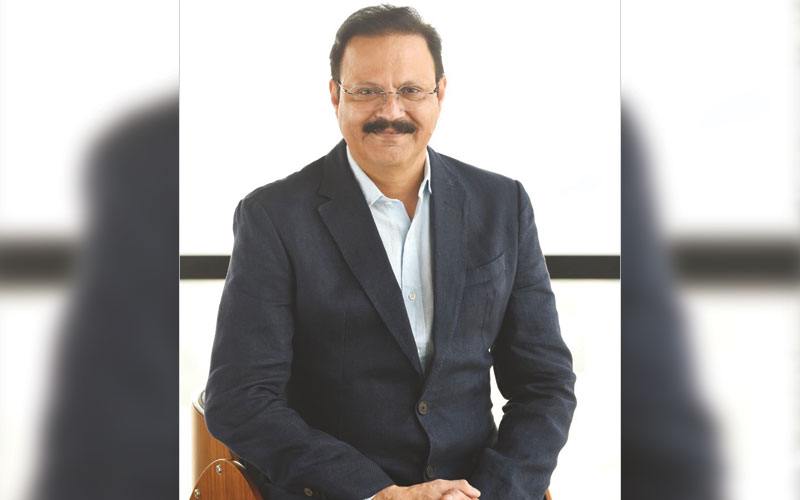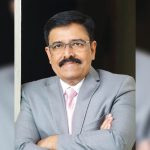From venturing into the solar segment with the manufacturing of solar DC cables in 2012 to adding solar on-grid inverters, solar DC MCBs and solar PV modules, Polycab developed its product basket to achieve the goal of becoming a one-stop shop for all the major components needed in solar projects. It aims to maintain excellent performance to stay the most preferred choice amongst many EPC companies, system integrators and end users. In an interview with Wire & Cable India, the company’s Executive President & Chief Business Officer (Cables), Mr. Bhushan Sawhney says, “the solar segment is significant to us because we are aligned with the national, sustainable and energy security goals of the nation.”

Wire & Cable India: How much has the Indian solar wire and cable segment evolved over the years, and how are you positioned as a manufacturer in it?
Bhushan Sawhney: Considering India’s aim to increase the renewable energy capacity to 500GW, including around 270GW of solar capacity, the Indian solar wire and cable segment has evolved from a good-to-have segment to a critical and must-have segment both from the suppliers’ and buyers’ perspective. The total power generation installed capacity (including renewables and nuclear) stood at 442 GW, as of March 31, 2024. Solar power generation capacity accounted for 18% of the total power generation capacity in 2024 and is expected to increase its share in the coming years. The installed capacity of solar power increased from 67 GW in 2022-23 to 82 GW in 2023-24.
The solar sector’s growth has led to an increased demand for specialized cables that can handle the unique requirements of solar power plants. These projects often involve long-distance transmission lines and complex grid connections, necessitating reliable and high-quality cable solutions. India’s solar wire and cable segment has experienced significant growth and development in recent years with an ambitious emphasis on India’s renewable energy goals, driven by various factors such as government initiatives, declining solar panel costs, increasing energy demand, and environmental concerns.
From venturing into the solar segment with the manufacturing of solar DC cables in 2012 to adding solar on-grid inverters, solar DC MCBs and solar PV modules, we have developed our product basket to achieve our goal of becoming a one-stop shop for all the major components needed in solar projects. We intend to maintain excellent performance and better generation of Polycab solar products to stay the most preferred choice amongst many EPC companies, system integrators and end users.
WCI: How significant is the solar segment for you? Please take us through your solar product portfolio.
BS: The solar segment is significant to us because we are aligned with the sustainable and energy security goals of the nation. As a leader, we endeavor to match India’s sustainability goal of increasing the renewable energy capacity to 500 GW including around 270 GW of solar capacity.
Polycab ventured into solar in 2012 with the manufacturing of Solar DC cables. The solar DC cables conform to EN 50618 for sizes 1.5sq. mm to 300 sq. mm and also to IEC 62930. Extending our foray into the solar field, we added solar on-grid inverters to our product basket in 2016. Polycab has a solar grid tie inverter manufacturing setup and offers ‘MAKE IN INDIA’ inverters from 2kW to 110kW capacity. Polycab’s on-grid inverters are IEC / BIS certified with all relevant applicable standards for the full range of inverters. Our product basket also includes solar DC MCBs and solar PV modules. We have developed solar boxes for the domestic market utilizing our proprietary internally developed and manufactured DC MCBs.
Watch: RR Kabel | Solar Cables | Solar Plant | Renewable Energy
WCI: Based on end-users, such as residential, industrial and commercial, where do your solar cables experience more demand? Why?
BS: We observe varying demand for our solar cables across residential, industrial and commercial segments. In the residential sector, the demand is driven by the increasing adoption of rooftop solar installations due to government incentives, subsidies, and the desire for energy independence. The demand is steady in this segment, and we see it growing with more and more adoption by households.
The industrial and commercial segments naturally exhibit a great demand. Industrial facilities often install large-scale solar systems to meet significant energy needs, reduce operational costs, and comply with sustainability goals, leading to substantial demand due to the extensive volume of cables required. Similarly, the commercial segment sees robust demand driven by corporate sustainability initiatives and favorable government policies, with businesses investing in solar energy for office buildings, retail spaces and commercial complexes. Both industrial and commercial projects emphasize the need for durable, high-performance cables that meet strict regulatory standards, ensuring reliability and efficiency, thereby increasing the demand for Polycab solar cables and wires.
We have planned projects for the installation of 3.3 MW of solar power capacity in Daman and Halol and have already installed a 0.72 MW solar rooftop system in Daman.
WCI: Where in the country do your products enjoy strong demand? Please elaborate why.
BS: Certain states demonstrate particularly high demand due to their unique advantages and proactive approaches. Gujarat and Rajasthan, with their high solar irradiance and large-scale solar projects, are at the forefront of solar energy adoption. Maharashtra, Madhya Pradesh and Tamil Nadu, as major industrial and commercial hubs, see significant demand driven by businesses seeking efficiency and sustainability. Karnataka, with its strong IT and commercial sectors, also shows substantial rooftop solar adoption. These states’ favorable climatic conditions, industrial growth, and government incentives make them key markets for our solar products, while we continue to cater to the growing demand nationwide.
WCI: What technologies have you incorporated into your manufacturing facilities to produce solar wire and cable? How unique are they?
BS: Polycab utilizes environmentally friendly E-Beam technology that meets the demand for sustainable products in line with worldwide market trends and ecological awareness. The insulation/sheathing in the solar DC cables is made of electron-beam cross-linked halogen free & flame-retardant compound (XLPO). The cables manufactured using this technology ensure that the cables are UV, ozone, temperature and hydrolysis resistant. The cables possess flame retarding and low smoke properties. The cables offer excellent encapsulation and have a very long service life of over 25 years.
WCI: Compared to other wires and cables, how different is the manufacturing process of solar wire and cables?
BS: The manufacturing process for solar wires and cables is distinct due to their exposure to harsh environmental conditions. Solar cables use UV-resistant, weatherproof materials in our case we use electron beam cross-linked halogen-free and flame-retardant compound (XLPO) and finely stranded tinned copper conductors for flexibility and durability crucial for handling the movement and thermal expansion in outdoor installations. Solar cables also need to manage higher voltage ratings and undergo rigorous testing for UV resistance, temperature cycling, fire resistance, and mechanical robustness. Compliance with stringent international standards such as TUV further ensures their reliability and safety, with a lifespan matching that of solar panels, typically 25-30 years.
In contrast, standard electrical cables often use materials like PVC, with single-layer insulation and less finely stranded conductors suitable for controlled environments. They have standard testing for basic mechanical properties and compliance with general standards like IEC. These cables are designed for lower voltage ratings and shorter lifespans, typically 10-20 years, and do not require the same level of environmental resistance and durability as solar cables.
WCI: How sustainable are your products? Please explain the process you have adopted to achieve it.
BS: Our innovative electron beam irradiated cables meet the rising global demand for sustainable products, driven by increasing consumer awareness of environmental issues. To ensure that we also manufacture our products sustainably, we have deployed advanced technologies aimed at energy efficiency and carbon footprint reduction to decrease our GHG emissions across all operations. We have planned projects for the installation of 3.3 MW of solar power capacity in Daman and Halol and have already installed a 0.72 MW solar rooftop system in Daman. Our continuous emission monitoring systems have been upgraded to provide more accurate and real-time data, enabling better control and reduction of pollutants released into the atmosphere.
Polycab has a solar grid tie inverter manufacturing setup and offers ‘MAKE IN INDIA’ inverters from 2kW to 110kW capacity.
WCI: Given India’s ambitious 500GW renewable energy target and solar wire and cable being the lifelines of the solar power system, what kind of growth prospects are you staring at?
BS: The expansion in the renewable energy sector will necessitate large-scale installation of solar farms, rooftop solar systems, and other related infrastructure, directly increasing the need for our products. As a result, we can anticipate significant market expansion opportunities both domestically and internationally.
Also Read: KEI Industries: Fulfilling Unique Demand of Photovoltaic Applications
WCI: Discuss some of the major challenges you have been experiencing as a manufacturer in the industry. What could help overcome them?
BS: In recent years, the pandemic and geopolitical tensions have led to significant disruptions in the global supply chain affecting the timely availability of raw materials and components. We believe that local sourcing, advanced inventory management systems to forecast demand and manage stock levels effectively and establishing a diversified supplier base can help mitigate risks related to import dependency and single-source dependency.
The local state policies for renewable energy management vary across states and may not be in complete sync with the central policies. This becomes a challenge to address for manufacturers. As a result, such states may not be able to reap the benefits that nature offers us. If all the states align with the central policies, this will improve the ease of doing business across all the states and India will progress with everyone together.
The high cost of machinery required to set up and operate a solar manufacturing set-up is very high. This is due to the purchase of machines from other countries and incurring additional costs in freight and final set-up. This incurs an initial setback to businesses trying to enter the business as well as to the running businesses that are already operating in the solar segment and require maintenance or replacement of the machinery. If the manufacturing of essential machinery is done within the national boundaries, this shall bring down the initial machinery set-up cost by a good margin and enable businesses to invest more in operations.
Prices of raw materials including metals and polymers used in cables and wires manufacturing are subject to volatility. If solar cells used to develop solar panels are manufactured and supplied locally, this will ease the procurement, reduce foreign dependency and in turn boost our economy and instill a sense of entrepreneurship as well. Long-term contracts and investment in cost-optimization strategies help stabilize prices as well as reduce the impact of general inflationary trends.
The export policies of many countries may not be very favorable for the expansion policies of businesses. If the export policies are eased a bit and relaxed, it will aid domestic players to expand internationally as well as help us plan and utilize our production capacity better.






